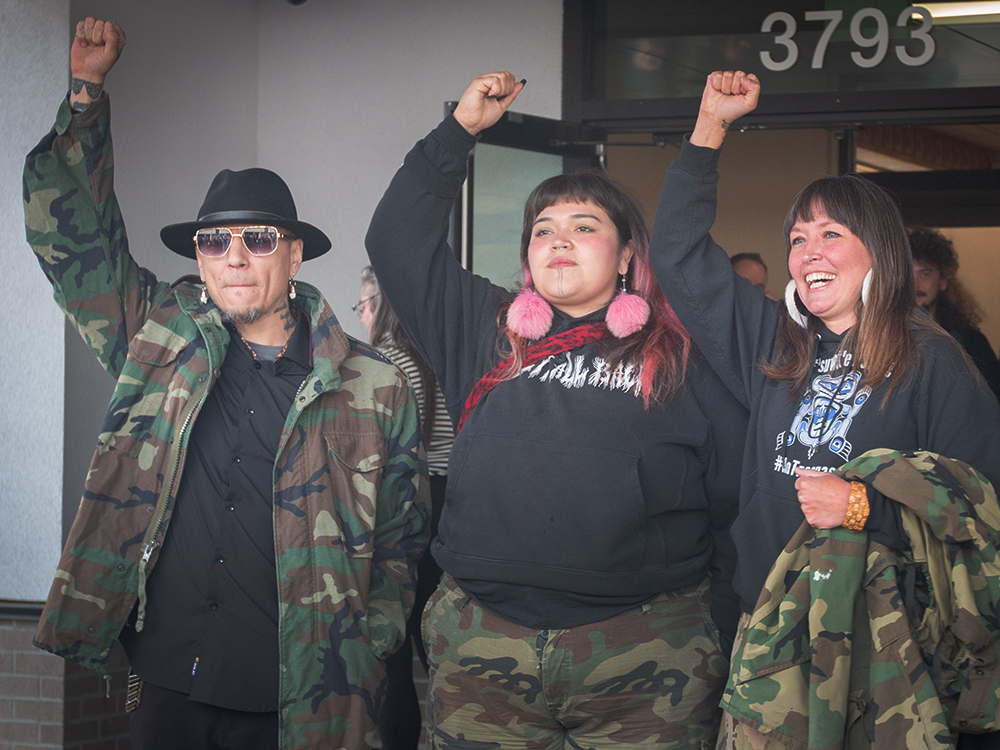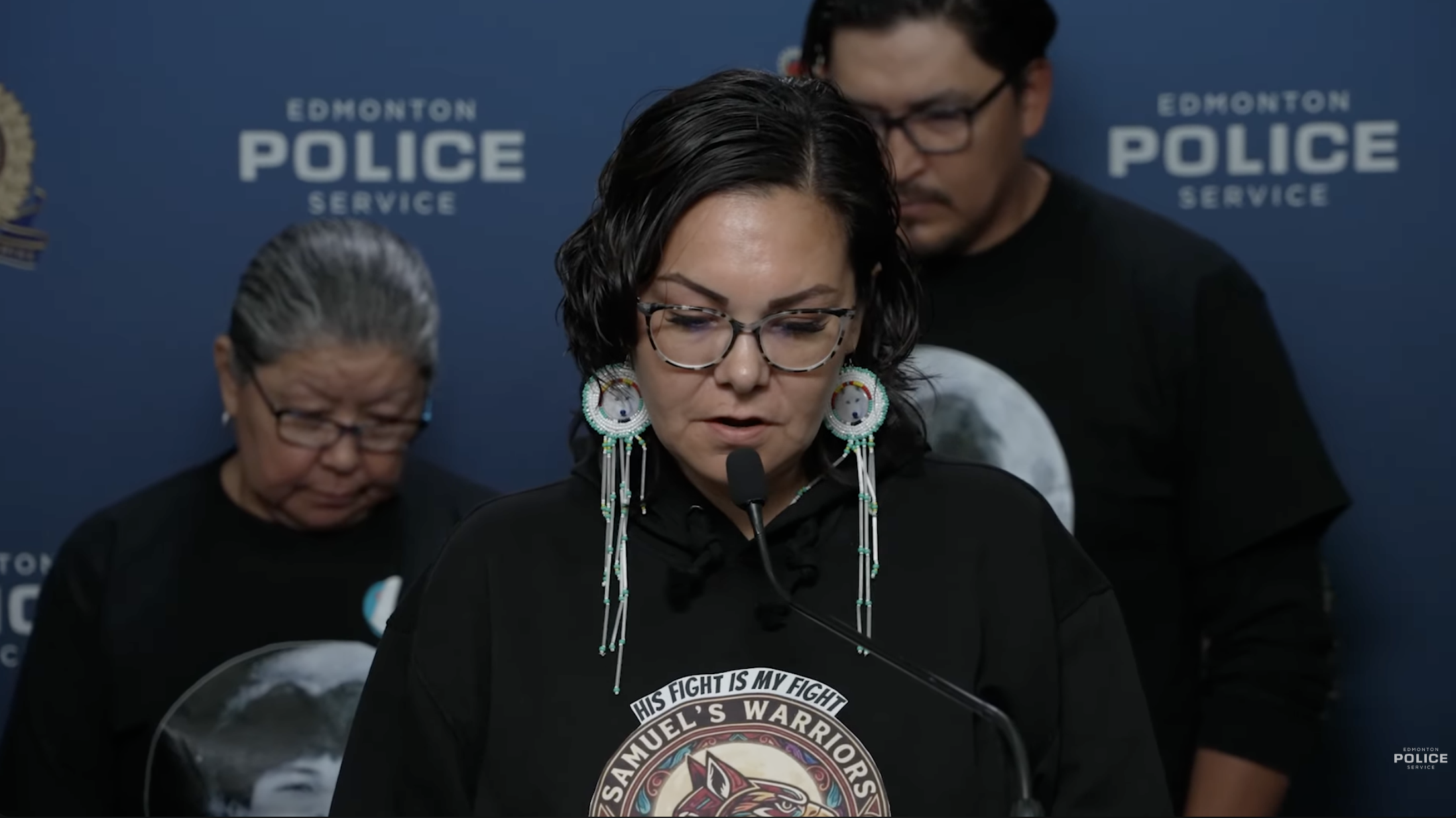Trusting the medicine of my great-grandmother
The day from my childhood with my chi-nookmis (great grandmother) is vivid in my memory. We’re walking the edge of a B.C. forest near the Columbia River, surrounded by lush early summer greenery. Far from her home territory of Nippissing and Sagamok, Elizabeth sees a plant she knows is here, too. Her hand points out…
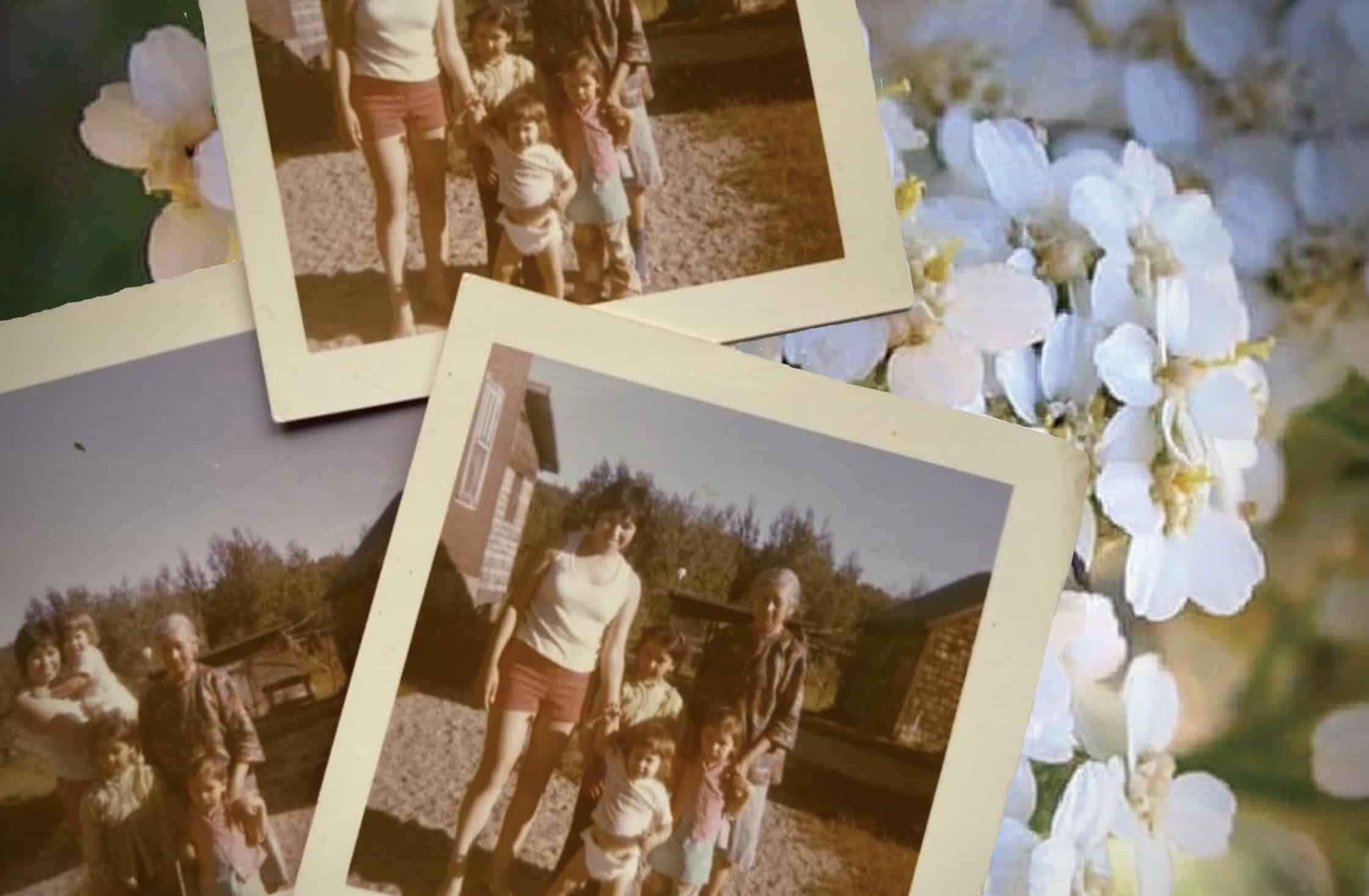
The day from my childhood with my chi-nookmis (great-grandmother) is vivid in my memory. We’re walking the edge of a B.C. forest near the Columbia River, surrounded by lush early summer greenery. Far from her home territory of Nippissing and Sagamok, Elizabeth sees a plant she knows is here, too. Her hand points out yarrow, its umbrella of densely packed, small white flowers atop strong stems and feathery leaves.
“That’s good for colds, use the leaves,” she says, explaining that it specifically helps to get rid of dry coughs and nosebleeds.
In the decades since that day, I’ve noticed yarrow growing everywhere from among railway tracks in East Vancouver to along hiking trails in the Rocky Mountains. Each time, I remember that walk I took as a child with my mom and her grandmother — my great-grandmother — Elizabeth (Zaabe).
Before she passed away in 1987, Elizabeth lived on a farm between two streams along the Spanish River near Massey, Ontario. Although I didn’t get to see her very often, I recall when I was a child being driven down a little dirt road by a sapphire blue river to visit her house — a little white one, with a tall red one right beside it. My grandparents built the second smaller house because my great grandpa was supposed to stay by himself since he had tuberculosis. When we arrived, Elizabeth was in front of the small house, 70 years old and chopping firewood with an axe. She did a lot of wood cutting in her old age, keeping wood stoves going in two houses. My dad got out of the car, and took over the chopping. I followed my mom into the small house.
Elizabeth was raising my mom’s cousins, two little girls, after their mom passed away. The other children and I peeked at each other, curiously. There was a quiet conversation between mom and great-grandma over tea while we girls went off to play.
Among my memories of her, what I remember most is what Elizabeth told me about plant medicine. I’ve carried distinct memories of her teaching their properties, which parts of the plants are useful, and when to harvest them. I recall her teaching me not only about yarrow, but about wild strawberries and other plants, knowledge which I’ve carried through my life, and I’ve worked over the years to strengthen. Specifically, I’ll close my eyes at night and focus on what needs to heal. Then, I’ll see an image in my eyelids, retina glowing patterns shifting like northern lights. Almost forming an image, fading, and just clear enough to recognize it. Then I’ll keep an eye out when I’m outdoors the next day, and find the new plant ally. When I research it, it’s usually something specific to what I was needing to heal. It was tucked away in the back of my mind, from when I was young.
When I was pregnant with my first child, I visited my mom. She was in the habit of walking every evening, and on our walks I pointed plants out. On this day, I pointed out yarrow, and she asked how I knew. “Remember when great-grandma said it’s good for nosebleeds and cough?” I asked.
My mom looked at me funny, with a pause before saying that, no, she didn’t remember. I reminded her of where we were walking near Revelstoke with great-grandma.
“Great-grandma never came to B.C.,” my mom said. I frowned, knowing she had walked with us in that place. I offered to take my mom to that path right now, I knew exactly where we were when she was with us. “No,” my mom said quietly.
I was confused, and somehow hurt. While one of my earliest memories was of Elizabeth, it was only that visit to her house. She had never taken me on that forest walk to teach me about plants. I kept turning the conversation back to it, and was dismayed to realize the memory must have been a dream — so vivid, I could hear the mud below my feet, and smell the yarrow. That night when I went to bed, I grieved the loss of one of my favourite memories. It had become part of who I was, how I started learning about plants.
Motherhood gave me a chance to pass on the plant stories, now I had two daughters to spend my days in the woods and garden with. But I stopped speaking about great grandma teaching me, and instead shared the story as a strong dream.
Another twenty years passed, and in 2020 I was attending land-based training in syilx territory for the organization IndigenEYEZ. The first exercise was to sit with the land – introduce ourselves and become acquainted. I sat and noted the differences between the silvery greens of the Okanagan plants and the deep greens of the Salish Sea where I lived. My mind shifted to the landscapes of my childhood in the Rockies. I’d been carsick on the drive up to the headwaters, and was trying to take my mind off it. Then I really saw the wild strawberries — crisscrossing everywhere in the underbrush. I started nibbling, remembering they were for stomach upsets. My great-grandma had told me — no, I corrected myself. I dreamt that she taught me.
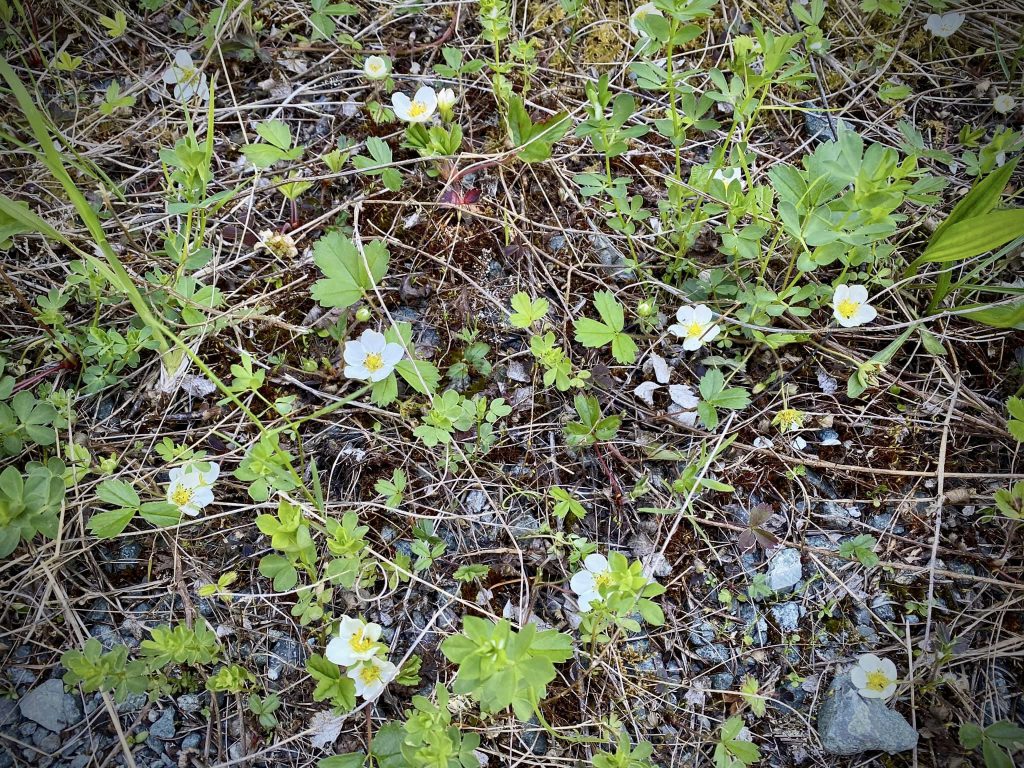
When the drums called, I returned to the circle. I sat with one of the sylix facilitators, Skayu Louis. I felt moved to share the sadness of realizing the teachings were only dreams. “So, your learning is to trust that dream,” he said. He explained the nsyilxcən word for people, sqilxʷ means “dreaming ones, bound together.” It also refers to the epoch we are in. The teachings of the sylix land healed my heart, and I thanked him softly.
Later that year, I happened across a dissertation on oral history by an Anishinaabekwe. As I read, a name popped out at me — Virginia Sinobert. My heart quickened, it was one of the little girls who lived with great-grandma.
In the paper, Pamela Rose Toulouse wrote about the role women have in preserving the cultures and traditions of the Anishinabek Nation. “The role of women and especially that of the grandmothers bear much responsibility.” Then my great-grandmother entered her research. “Our grandmothers have always been the foundation of our culture,” writes Toulouse, with an excerpt from cousin Virginia’s interview. “I had problems with my asthma so bad. She would go out to the bush, pick out certain barks and make a wicked brew for me to drink. It helped,” said Virginia. “She’d be a herbologist or something today, she knew things like that.”
So it wasn’t ‘only’ in my dreams that my great-grandma was a knowledge keeper of plant medicine. I shared this with my Anishinaabemowin language teacher, Elder Dorothy Eastman just before she passed. She told me that it was a gift, she had visited me, and wanted me to hold these teachings — for them to continue.
I wondered how this connection was possible, when I grew up so far away. I call my mom’s cousin Virginia. She put semaa down and asked our chi nookmis and our ancestors to be with us in our conversation.
“When we dream, that’s when we go to that spirit world,” my cousin Virginia shared. “As grandmothers, we can connect with our grandchildren, even though we’re not physically there for them to see us, like a spirit visit. Because they’re part of us, our DNA is in them. And as a woman, I carried not only my daughter, but also my granddaughter in those eggs.”
I tell Virginia about the first dream about yarrow. She tells me about the plants chi-nookmis Elizabeth used, and describes one as “like a squirrel’s tail, but green.” I tell her she’s thinking of the Anishinaabemowin name for yarrow — which is squirrel’s tail. She chuckles. It’s one of the most common herbs all over the world, so it was a good choice for my first teaching. It’s also known as the wounded warrior’s herb, and some herbalists expand on that to include wounded healer’s. “A healer teaches and heals others only through the healing of their own wounds and trauma,” is how the Berkeley Herb Centre describes yarrow.
There was a path from the red house, out to where the choke cherry trees were — and to the sweetgrass. My chi-nookmis picked the grass, with help from the children, braiding and hanging to dry in the house.
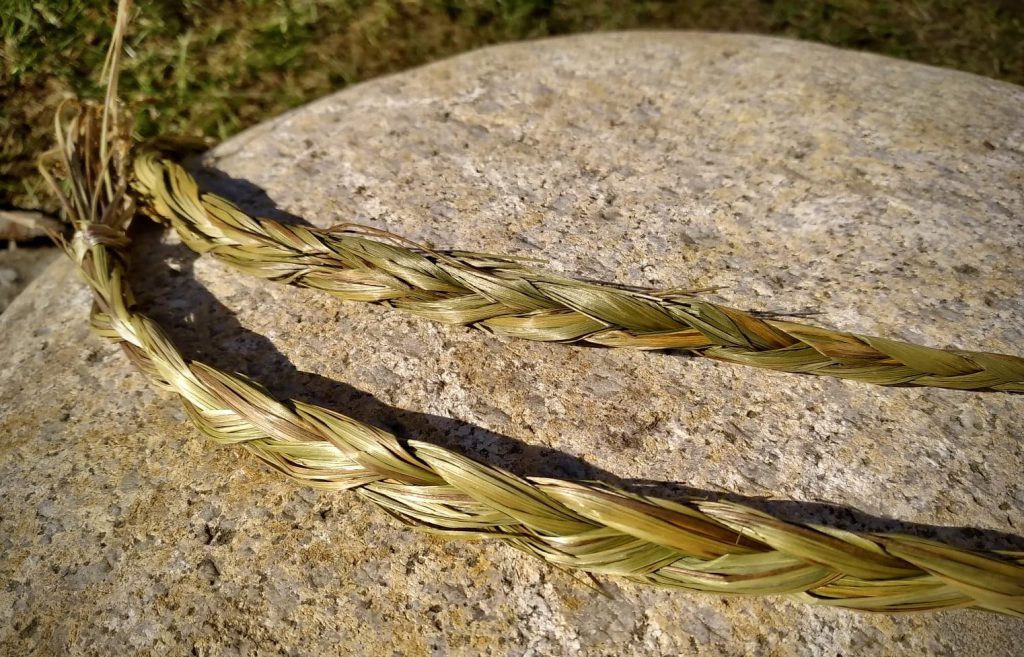
My cousin remembers being taught from the stars, and she tells me it’s almost time for sugar tapping. Chi-nookmis had a big maple tree on her driveway, and gave the first tap to kids as a spring tonic. The word for medicine in Anishinaabemowin is mashkiki, literally meaning ‘strength of the earth,’ mash (strength) and aki (earth).
My chi-nookmis was someone who knew the strength of the earth. She was of the earth, and was medicine for our family. I felt the power of how a grandmother’s love can heal many things, and the strength it took to hold things together for the future to be possible.
I fell asleep thinking about chi-nookmis Zaabe’s sweetgrass hanging to dry, filling the small house with its sacred smell. I woke up to the damp, fresh smell of cedar from my girl’s weaving. The Anishinaabe are dream-conscious people, and my learning has been to step away from the binary definitions of dream and waking, spirit and body. My kids have grown up knowing to share their dreams in the mornings, a genuine conversation and something of value we learn from. My pantry is filled with herbs I’ve harvested, and yarrow volunteers in my garden. Every year I clear around it, so the patch can continue to grow and give healing to my family.
Author
Latest Stories
-
‘Bring her home’: How Buffalo Woman was identified as Ashlee Shingoose
The Anishininew mother as been missing since 2022 — now, her family is one step closer to bringing her home as the Province of Manitoba vows to search for her
-
Land defenders who opposed CGL pipeline avoid jail time as judge acknowledges ‘legacy of colonization’
B.C. Supreme Court sentencing closes a chapter in years-long conflict in Wet’suwet’en territories that led to arrests
-
Samuel Bird’s remains found outside ‘Edmonton,’ man charged with murder
Officers say Bryan Farrell, 38, has been charged with second-degree murder and interfering with a body in relation to the teen’s death



